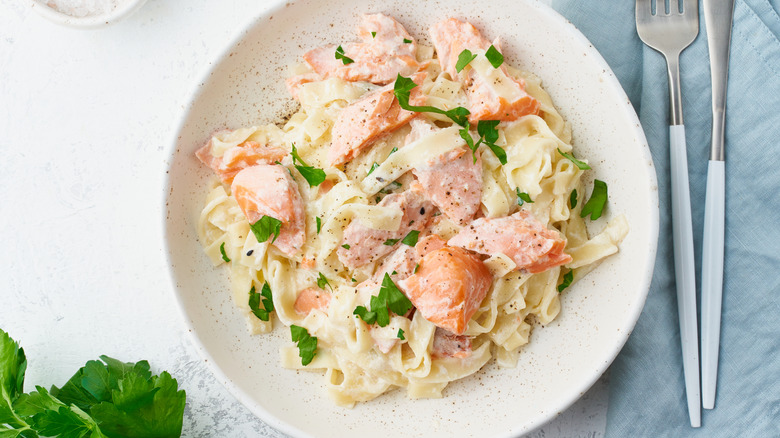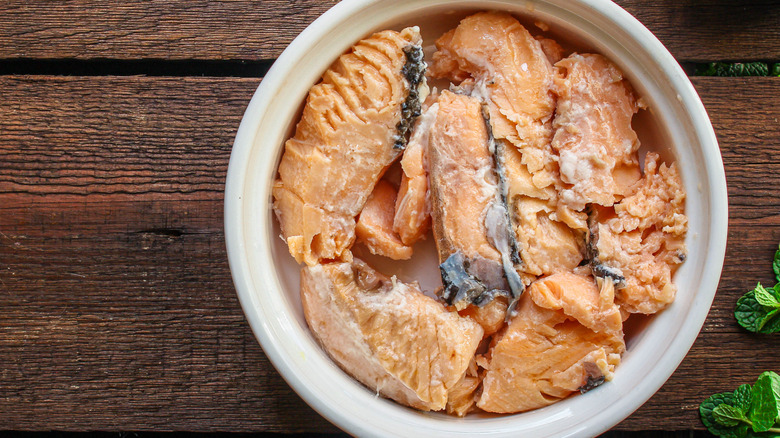The Best Canned Fish To Elevate Creamy Pasta Dishes
We may receive a commission on purchases made from links.
Canned fish is a life saver when you haven't got fresh protein in the fridge. Fully cooked and ready-to-go, canned tuna is perfect for adding to casseroles, anchovies are awesome for lending a savory oomph to lackluster sauces, and mackerel is ideal for bolstering a simple salad of greens and grains. But which variety of canned fish is the best for elevating creamy pasta dishes? We spoke to expert Charlotte Langley, founder of Nice Cans and Langley Foods, to give us her thoughts on the best canned fish to upgrade noodle recipes that feature cream.
"Canned salmon is versatile," Langley says. "Try it in a creamy salmon pasta with capers and lemon for a tangy twist or mix it with arugula and cream for a refreshing sauce."
While canned salmon is drier in texture than a fresh filet, the cream in a pasta sauce replenishes some of that lost moisture, lending it an unctuous mouthfeel and satisfying quality. The fishy flavor of the large flakes, which have a meatier texture than flaked tuna, is also tempered by the cream while briny capers imbue it with a bright, tangy zing. A final dash of acidity from fresh lemon juice cuts through the richness of the sauce and balances out the saltiness of the canned fish that comes from the brine it's packed in. The pepperiness of fresh arugula works similarly to the lemon, adding a new flavor layer while counteracting the salt. To add it, simply drain and flake the fish, and put it in towards the end of making your sauce.
Rinsing canned salmon curbs its flavor
You may be discouraged from using tinned salmon because some brands contain bones. Luckily it isn't dangerous to eat the bones in canned salmon because the fish undergoes a pressure cooking process whereby the small bones inside the fish become soft and virtually unnoticeable. This means you can use canned salmon in the same way as tinned tuna without worrying about removing any bones before adding the coral flakes to your pasta. Having said that, you can purchase canned salmon that doesn't contain bones if you prefer, or use tweezers (like these inexpensive stainless steel fish-bone tweezers) to debone your protein with ease. Whichever brand you select, drain your canned salmon well to remove as much packing liquid as possible before adding it to your pasta or the extra liquid will adversely affect the consistency and seasoning of your sauce. However, it's a mistake to rinse your canned fish because it can wash away some of its preserved natural flavor; a quick drain is sufficient.
Any leftover salmon can be incorporated into an array of canned salmon recipes, such as herby croquettes, fish burgers, or a cheesy frittata. In fact, you can seamlessly sub in a can of salmon for almost any recipe that calls for tuna.

